Greetings, and I hope you are doing well.
I also hope you got a chance to read my First Listen impressions of the Triode Lab 2A3 parallel single-ended-triode RSR monaural amplifiers in my vintage Altec A5 Voice of the Theatre loudspeakers based audio-visual system (HERE). I was impressed with their performance.
I often put new arrivals here at Jeff's Place into my A5 audio-visual system to build up hours on them quickly to get them through their run-in process and to get some initial listening impressions.
I'm guessing that I probably have about 100 hours on the Triode Lab 2A3 P-SET RSR monaural amplifiers with Altec A5s, with probably 100 hours to go for full run-in, so I thought it was time to get them installed into my primary music system with my Tannoy Westminster Royale SE loudspeakers, and listen to them in that context.

Triode Lab 2A3 P-SET RSR monaural amplifiers with Westminsters.
It seems like it almost always takes components a few days to settle down into a new system context, and then I can go to work getting everything voiced the way I want it.
After a couple of days of playing music with the new system setup the sound quality and musicality began to gel quite nicely.
Below is what I ended up with as a first cut at getting everything voiced so it would play a broad range of program material in musical fashion, from the acoustic era of recording all the way to the digital era of recording, while still bringing out the distinct attributes of each of those eras of the recording arts.
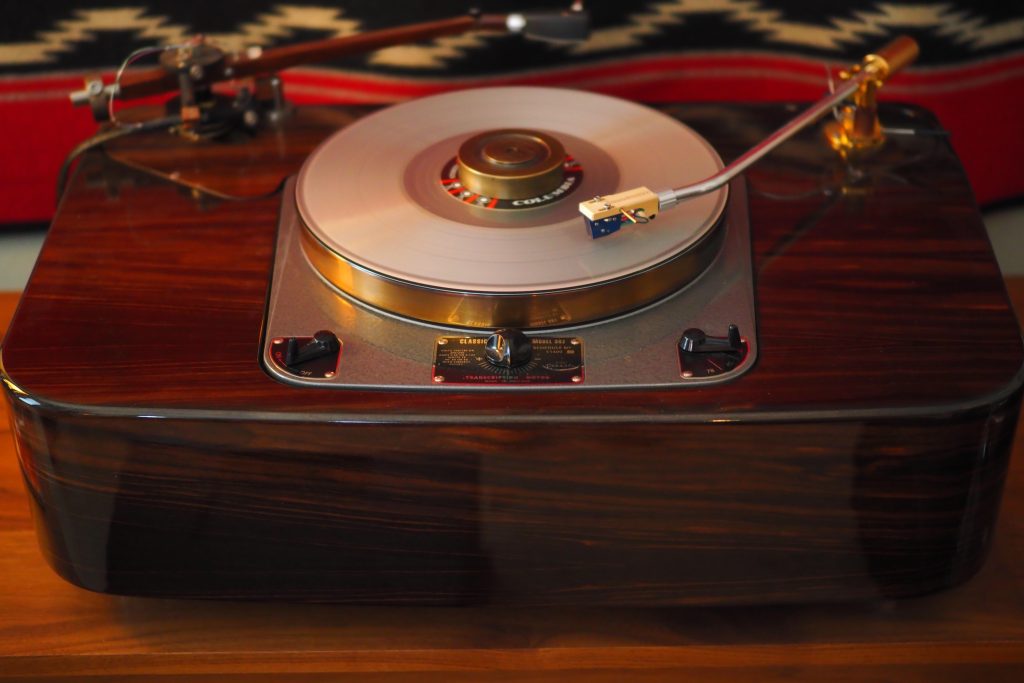
CTC Garrard 301 with Schick tonearm, Audio Note (UK) Io I moving-coil phonograph cartridge, AN-S4 step-up transformer, and AN-V Silver Interconnects.
The vinyl front end is my CTC Garrard 301 turntable mounted with a Schick tonearm, Soundsmith wood headshell, Audio Note (UK) Io I moving-coil phonograph cartridge, AN-S4 step-up transformer, AN-V Silver Interconnects to connect to the SUT to the Leben RS-30EQ phono stage, and Audio Note (UK) AN-SPe silver loudspeaker cables to connect the Triode Lab RSR 2A3 P-SET mono amps to the Westminster loudspeakers.
I'll discuss more listening impressions with the vinyl front end in a future post, as I want to devote this post to a couple of the CDs I listened to in order to start getting the system voicing dialed-in with a digital front end.
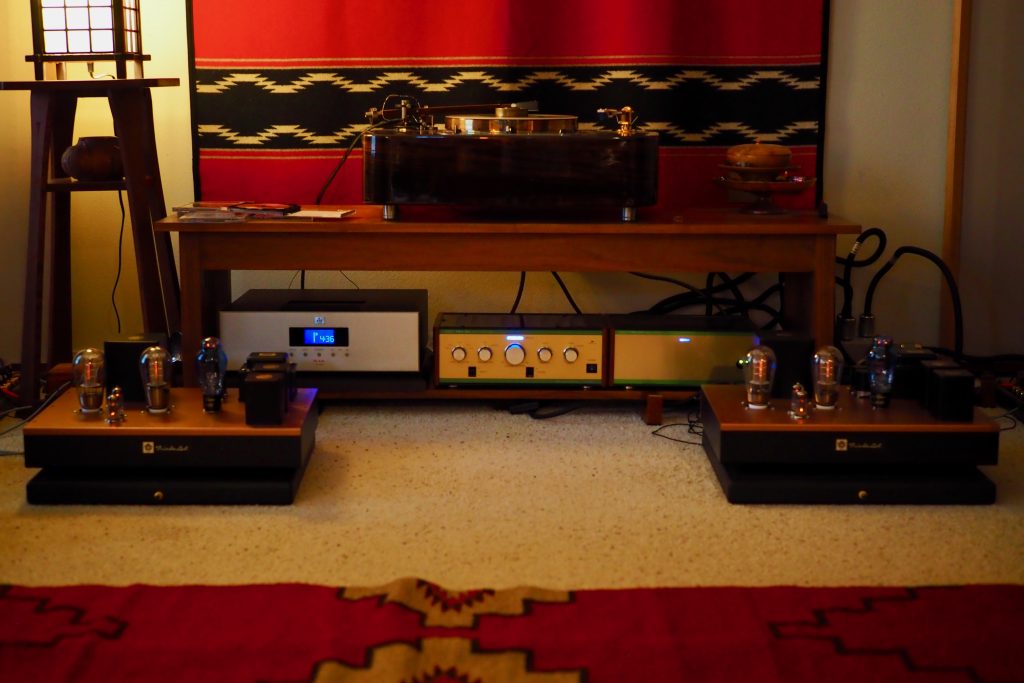
Triode Lab 2A3 monos, Audio Note (UK) CD 4.1x, Leben RS-100U line amp, and Leben RS-30EQ phono stage.
The digital front end at the moment is the Audio Note (UK) CD 4.1x that is in for review at Positive Feedback (more HERE), which is connected to the Leben RS-100U line preamp with Belden 8402 tinned-copper microphone cable interconnects. As you'll read more about in a moment, the CD 4.1x sounds superb in this context, and is a great match to the associated components.
Acoustic Revive silver-copper hybrid RCA Absolute FM interconnects connect the Leben RS-100U pre to the Triode Lab 2A3 monos.
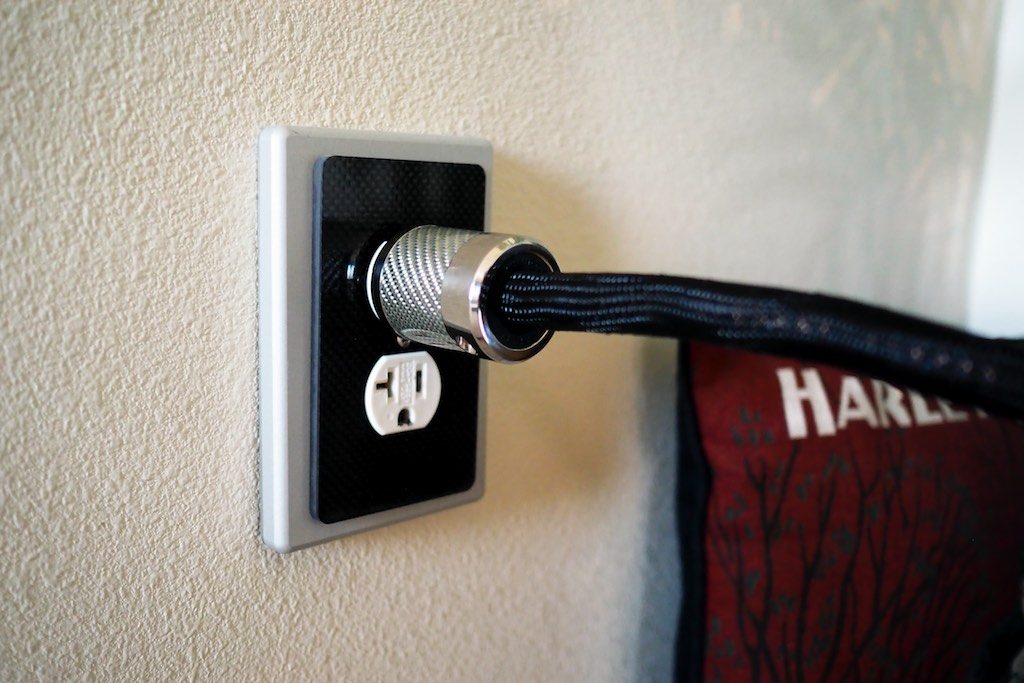
Acoustic Revive wall outlets.
Acoustic Revive 'Absolute' or 'Power Reference TripleC NCF' AC power cords are connecting all the components to the AC line via an Acoustic RPT-6 Absolute NCF Power Distributor.
My AC outlets consists of Acoustic Revive CB-1DB receptacle base plates, CFRP-1F carbon fiber outlet plates, and Acoustic Revive modified Oyaide R-1 receptacles.
System Voicing & Listening
As I've mentioned in previous posts, my approach to system voicing has changed appreciably over the last few years.
I've noticed in mine and others' audio systems, that when only the best recordings from the magnetic and digital eras of the recording arts are used to voice a system, often that system will sound really good on those 'super' recordings, but will sound subpar on the vast majority of recordings from the acoustic recording era (1877 to 1925) and the electric recording era (1925 to 1945), as well as the less than stellar recordings from the magnetic recording era (1945 to 1975) and digital recording era (1975 to present), which is to say, most recordings of music in our recorded music canon.
I think there is a natural tendency when voicing a system with only 'super' recordings to slightly emphasize the presence region (4 kHz to 6 kHz) and brilliance region (6 kHz to 12 kHz) to make those super recordings sound even more 'super' in a hifi spectacular sort of way, but the down side is that it makes most 'normal' recordings sound harsher and less musically engaging.
Tip: There's an excellent article describing how altering the different frequency regions of recordings affects overall musicality HERE, on the Teach Me Audio website whose focus is on recording, mixing, and mastering.
I've grown quite fond of listening to recordings that span all the eras of the recording arts, and given that many of greatest musical performances from our vast recorded music canon were only rarely recorded to audiophile-style standards, it makes it worthwhile for me to voice my systems so they will play all music well, and deliver the full emotional impact of the musical performances regardless of the recording quality.
So there's a couple of goals I have when voicing, one being a natural tonal, presence, and dynamic balance for the music being listened to, that maximizes my emotional engagement with the music. Essentially that means the voicing conveys a verisimilitude to the sound and feel of live music-making, or as our friend Yazaki-san likes to say, "real sound".
Also, I want to have insights into the nature of the recording arts used to make the albums. Nearly all recordings of music are different from each other. They may have been recorded in different eras of the recording arts, they may have been recorded at live venues or be studio recordings, they likely used different brands/types of recording equipment and personnel, and the resulting recording has been optimized by a recording engineer with respect to a particular take on mixing and mastering to produce an overall portrayal of the music in their preferred way.
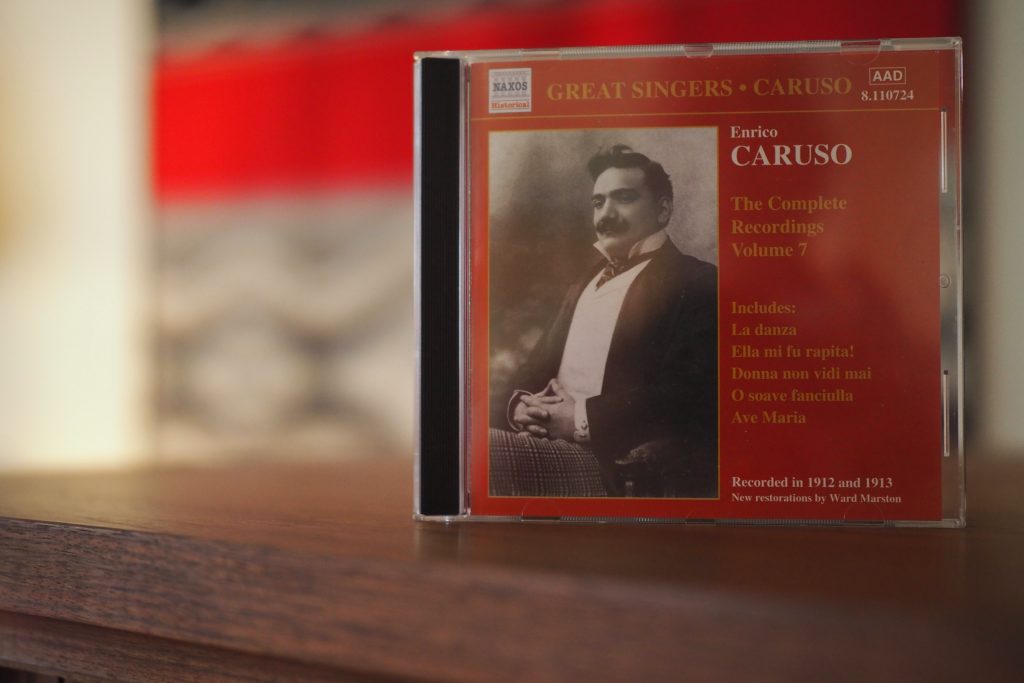
Enrico Caruso from the acoustic era of the recording arts.
There is a treasure trove of music by the great operatic tenor Enrico Caruso (1873-1921) in the Naxos Historical box set, The Complete Recordings of Enrico Caruso, produced and restored by Ward Marston of Marston Records.
Caruso was an early adopter of the recording arts, and a very enthusiastic one, so there's lots of great musical performances to enjoy. The album above, Volume 7 from the box set, was from performances recorded in 1912 and 1913, in the heart of the acoustic era of the recording arts.
Ward Marston did a terrific job restoring and producing this box set of important music. When my audio systems are voiced appropriately, the surface noise inherent to 78 recordings comes across as a somewhat louder version of what you hear from the 'tape hiss' on recordings from the magnetic era of the recording arts, and as such, does not detract from the incredible 'goosebumps' performances of Caruso.
So what I am listening for when voicing for an acoustic era album is a tonally natural presentation of the musical performance that is musically engaging, and noise artifacts from that period of the recording arts that are not exaggerated. Maximum engagement with minimum distraction.
Incidentally, when the system voicing for an acoustic era recording is portrayed in that sort of natural manner by an audio system, the 'super' recordings of the magnetic and digital eras of recording also sound stunning, but with the benefit of not having that 'synthetic' or 'hifi spectacular' type of sound quality that I find so distracting in many 'high-end' systems these days. More on that in a moment.
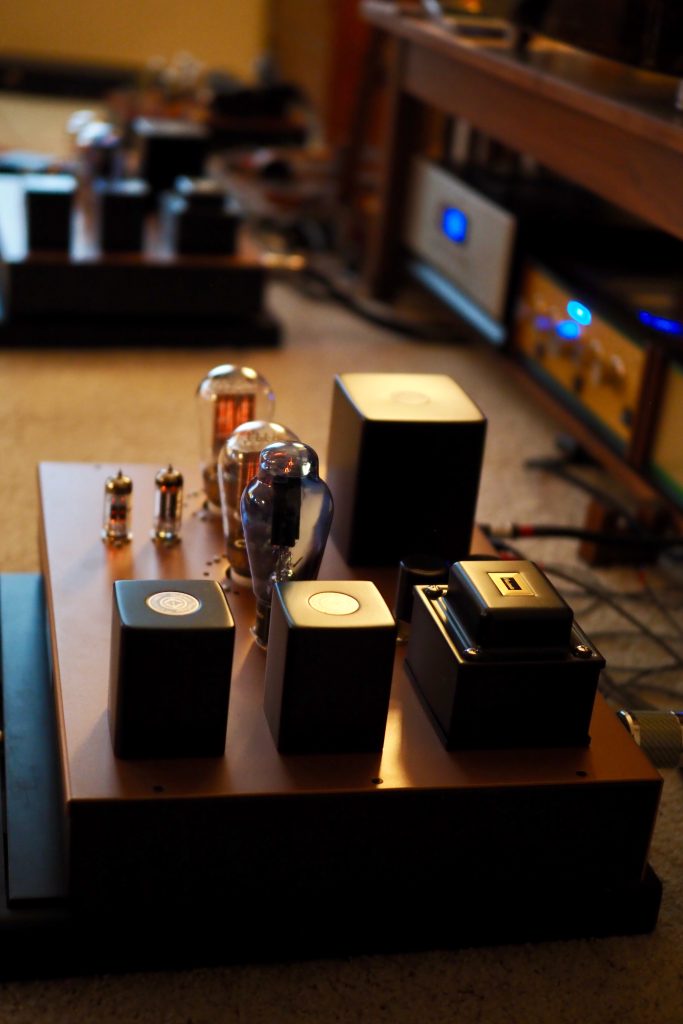
Triode Lab 2A3 parallel single-ended-triode RSR monaural amplifiers.
The Triode Lab 2A3 parallel single-ended-triode RSR monaural amplifiers were very impressive on these acoustic era recordings, with a beautifully natural tonal balance, and noise artifacts that were rendered smoothly and were somewhat withdrawn from the music, putting the musical performances at the forefront.
Sometimes the recording levels of these acoustic era recordings are not very high, and one can come close to running out of power on big dynamic swings with very low powered amplifiers, but with the Triode Lab 2A3 P-SET's robust 8 watts of output I always had more than enough power to handle any dynamics swings that came my way.
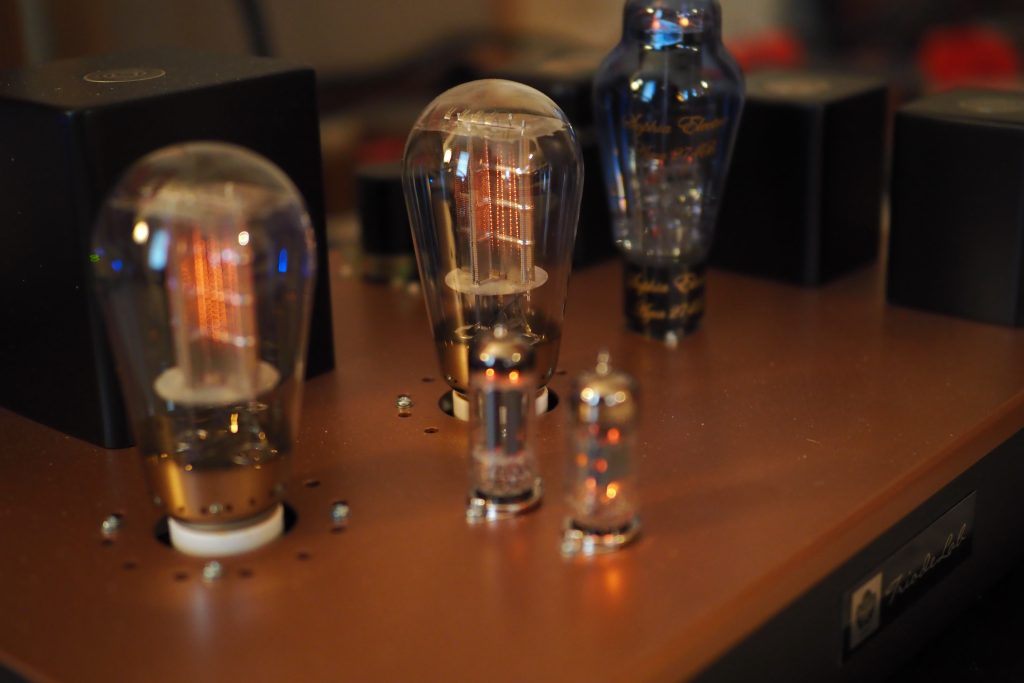
Triode Lab 2A3 P-SET RSR.
The Triode Lab 2A3 RSRs also recover a remarkable amount of information from these ancient recordings. These old acoustic era recordings were done direct-to-disc at 78 rpm (or sometimes faster), so they captured a remarkable amount of recorded information for their era.
The Triode Lab 2A3 RSRs are very natural and organic sounding tonally, perhaps more so than any amplifiers I've encountered (still thinking about that one), and they certainly portray the music with a great deal of 'presence' in the listening room, and superb dynamics, making for exciting listening sessions that are emotionally invigorating.
For these Caruso acoustic era recordings I'd say the Triode Lab 2A3 RSRs scored an easy 10 out of 10 for making these musical performances accessible, natural, and emotionally engaging, and transcendent of the limitations of their recording era.
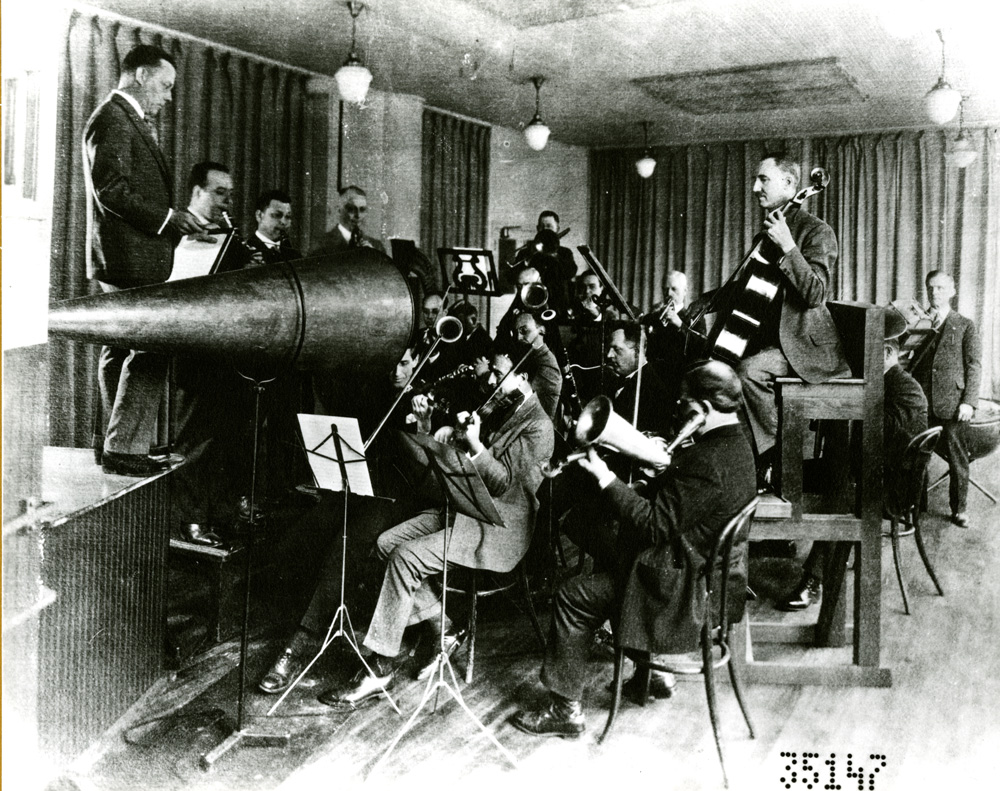
Early acoustic recording session. Photo courtesy of the US Library of Congress.
The Triode Lab 2A3 RSRs portray a certain sort of 'authenticity' for the recording era, so I could admire all the heroic efforts involved in capturing these musical performances in the acoustic era, bringing the past to life in my listening room, while at the same time making these ancient performances immensely enjoyable, even intoxicating.
Tip: If you are having difficulty getting that sort of natural and engaging performance on these early recordings, I heartily recommend you first try Yazaki-san's suggestion of 16 gauge tinned-copper speaker cables in combination with Belden 8402 tinned-copper microphone cable interconnects.
More often than not, that simple cable change will bring out the best from early recordings, and as a bonus they're inexpensive cables.
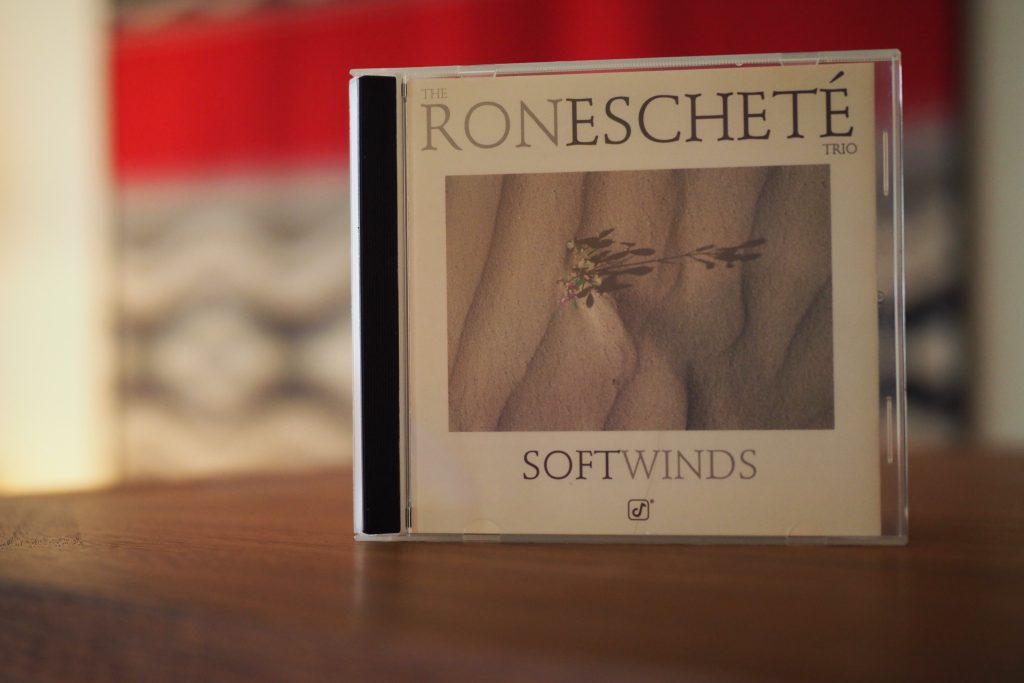
Soft Winds album by the Ron Eschete Trio.
My friend David Gitlen recently brought over the Soft Winds album by the Ron Eschete Trio for us to listen to after David taught me my weekly jazz guitar lesson. Featuring Ron Eschete on guitar, Todd Johnson on bass, and Paul Humphrey on drums.
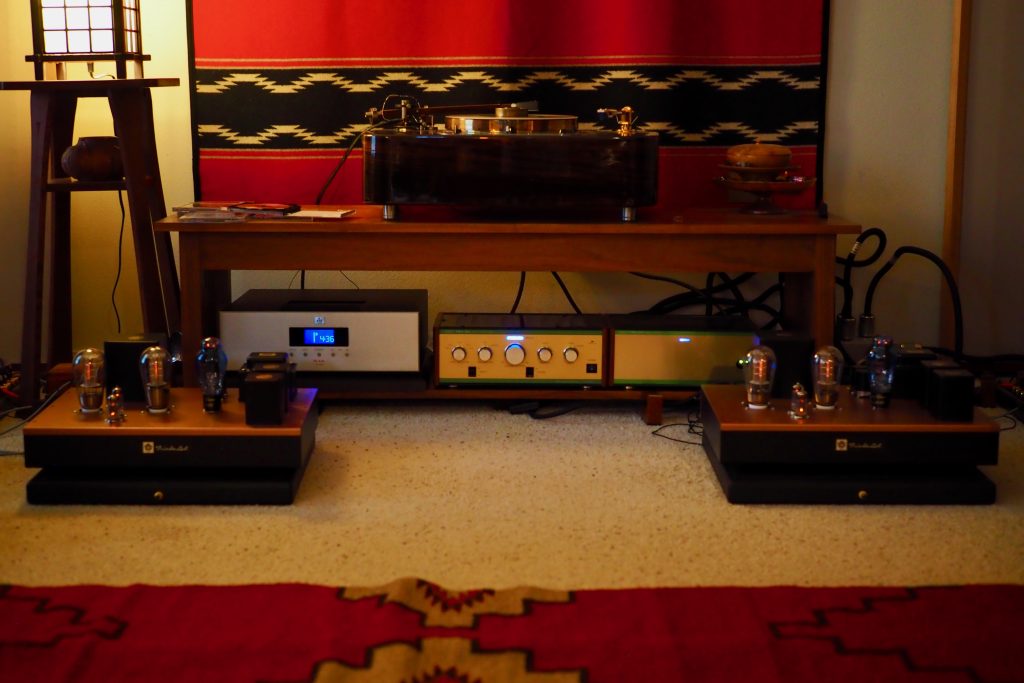
Triode Lab 2A3 RSR mono amps.
Soft Winds was released in 1996, and was recorded in Sage & Sound Studios in Hollywood, CA, with "... a dedication to vintage and state of the art equipment alike ...".
I'll tell you what, through the Triode Lab 2A3 RSR mono amps the sound quality on this recording is simply superb. I don't have any idea if the recording was on magnetic tape or if it was digital, as there's no indication in the liner notes, but I couldn't care less, it's superb by any measure.
The Triode Lab 2A3 RSR mono amps are imaging champs, and give the recorded aural images lots of body and presence. With these RSR mono amps you get that classic SET 'lit from within' presentation where each aural image is highlighted in its own acoustic space. The sound quality is liquid, warm, natural, resolving, and very impressive all around, and put me back on my heels with a "Wow!"
I know, that's the audiophile in me coming out, but when you hear great music like that of Soft Wind on a great audio system it is rather awe inspiring on many levels.
Have I mentioned that Ron Eschete plays a 7 string jazz guitar? He does, and his chord melodies are amazing, as are his improvisations.
If you don't have the Soft Winds album yet, I recommend you go find one on Discogs, there were still a few for sale when I bought mine.

Triode Lab 2A3 RSR mono amp.
I like to start my system voicing with acoustic era recordings, because if you can get those voiced right, then the later recording eras will also sound superb ... and naturally musical.
I'm still early in my voicing process for the upcoming review of the Triode Lab 2A3 P-SET RSR monaural amplifiers for Positive Feedback, but I really like what I'm hearing already, in fact I'm really impressed.
Did I mention that Hashimoto custom makes the RSRs' transformers for Frank at Triode Lab according to his specifications? These are seriously good transformers, and they match to my Westminster Royal SE loudspeakers like they were tailor made to complement them.
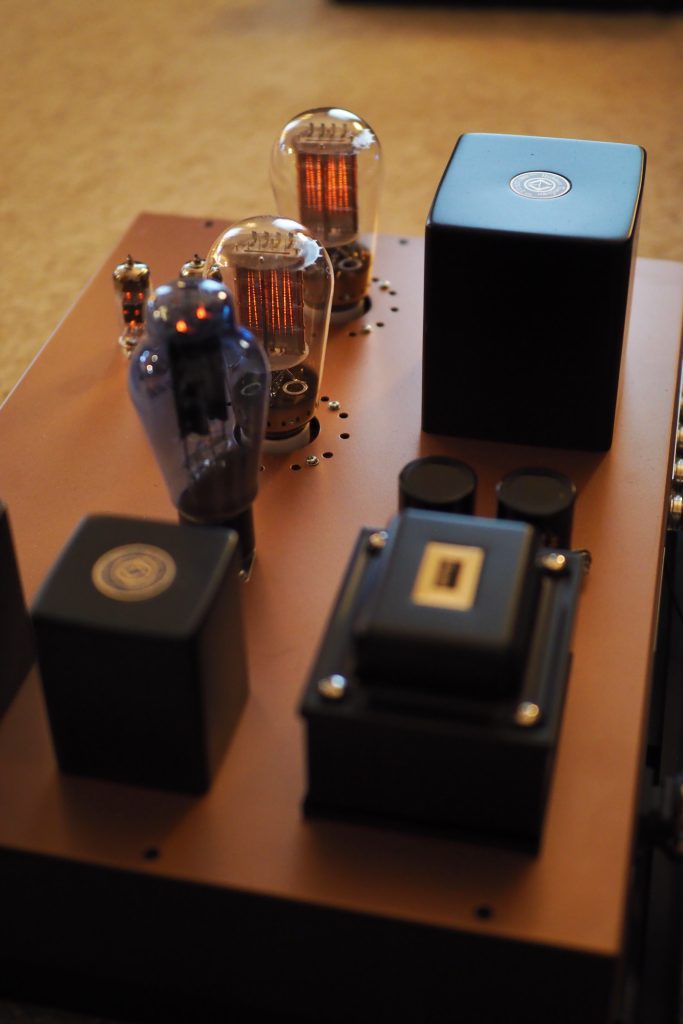
Triode Lab 2A3 RSR mono amp.
A good friend asked me if I could hear any reduced 'focus' due to the Triode Lab 2A3 RSRs having paralleled 2A3 tubes compared to singles. The answer is no, the paralleled 2A3s speak with one voice.
There is an astonishing purity and cohesiveness to the sound that is truly impressive, not to mention that all of the musicality elements like tone color, timbre, melody, rhythm, harmony, beat, and dynamics are possibly the most realistic I've ever heard from an amplifier.
There's also power to spare on my Westminsters, I've never even come close to running out of power when playing at live-like levels.
I'll tell you what, Frank at Triode Lab continues to astound me with his amplifiers. The build quality is superb. The sound quality is stunning. The musicality is perfection. I'm really, really, impressed with Frank's design talents.
Frank's amplifier designs don't really sound like anything else out there, they are an evolutionary/revolutionary jump forward in SET performance in my opinion. You just have to give them a listen to know what I mean.
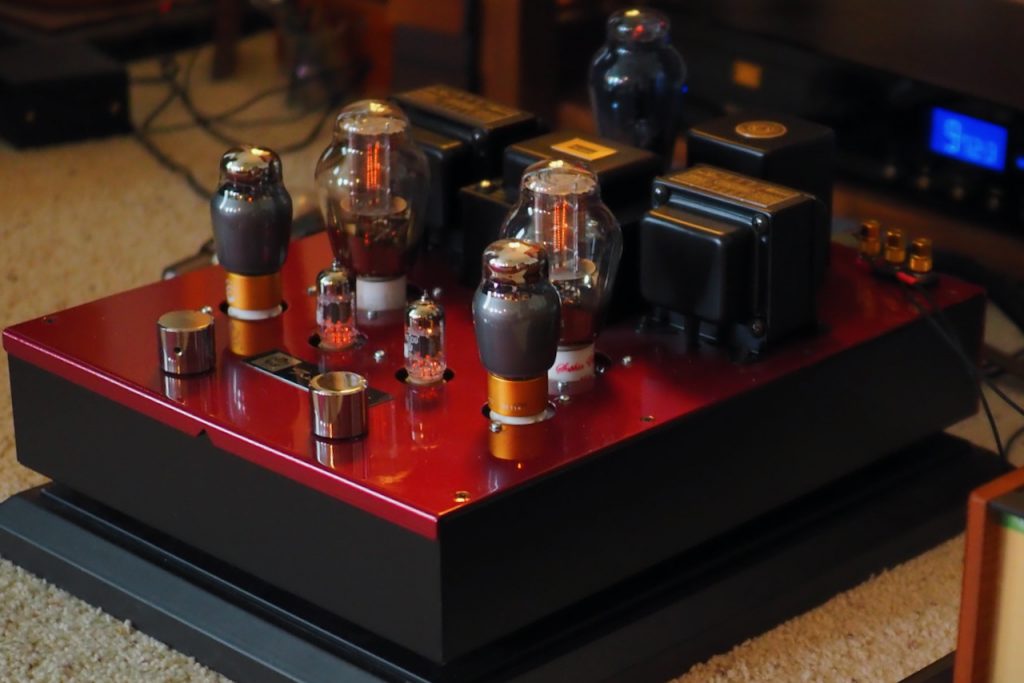
Triode Lab 45 EVO integrated SET amplifier.
Like Frank's 45 EVO - which is now my reference amplifier for my Westminster Royal SEs - the Triode Lab 2A3 RSR P-SET monaural amplifiers are really something special. Stunning really.
Is there anything I don't like about the Triode Lab 2A3 RSR P-SET monaural amplifiers? Well yes ... they're not mine!

Triode Lab 2A3 P-SET RSR monaural amplifiers with my Westminsters.
Ok, I better tie it off there, as I'm gushing so much I'm embarrassing myself a bit.
There will be more to come on the Triode Lab 2A3 P-SET RSR monaural amplifiers as I get some more time on them, with some vinyl listening impressions next, to be followed by their feature review at Positive Feedback in the not too distant future.
As always, thanks for stopping by, and may the tone be with you!



























